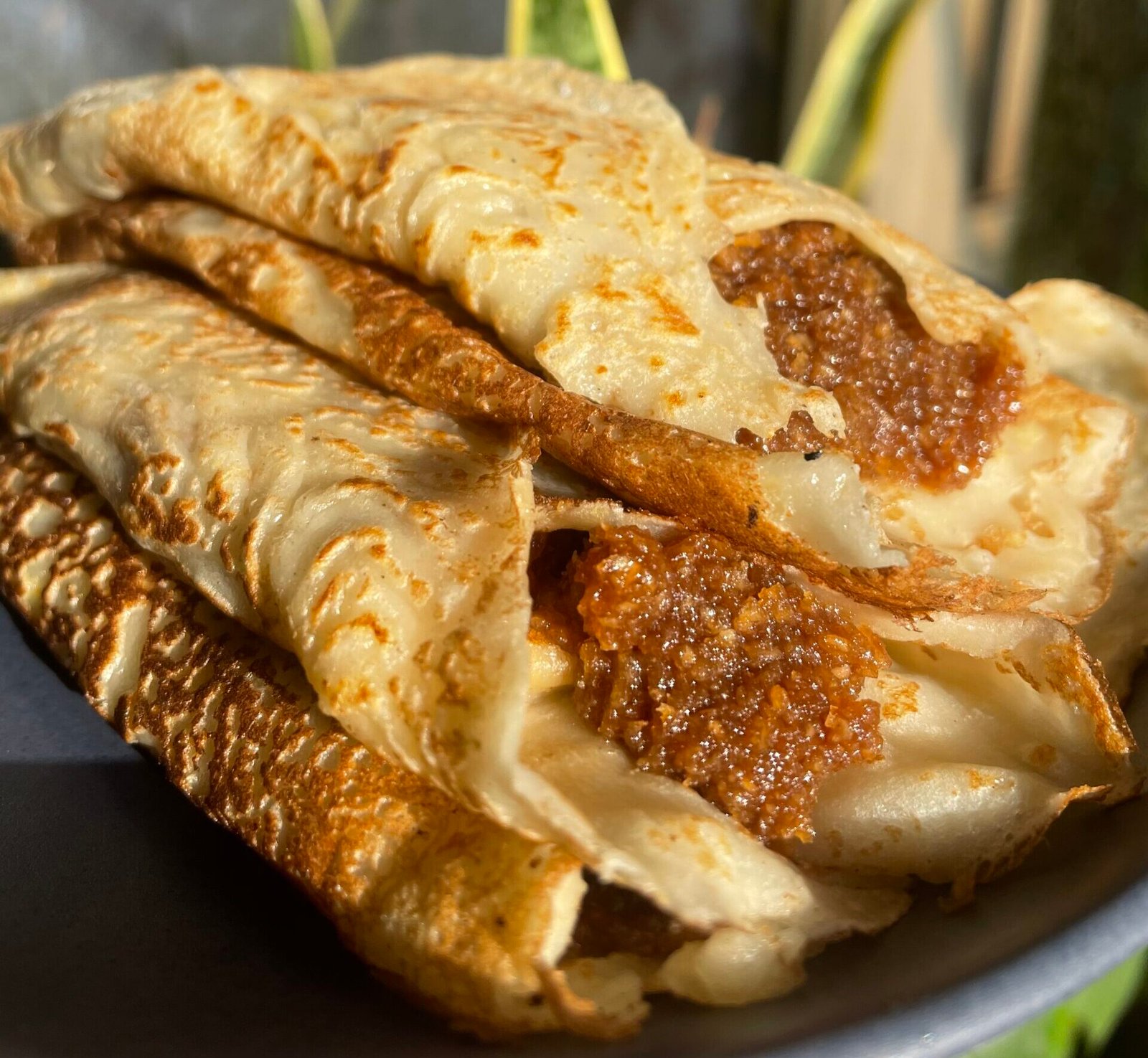
In our household in Delhi, January doesn’t only mark the promise of new beginnings and cold winter nights but also the sweet, familiar aroma of patishapta—a symbol of love passed over generations.
Growing up, I began to realise how intricate the mother-daughter relationship can be—layered and nuanced, much like the patishapta itself. Traditionally, at home, payesh—rich, creamy, indulgent—is the celebratory birthday sweet of choice. But my mother’s birthday, falling in January and coinciding with the harvest festival of Poush Sankranti, meant something different. Instead of payesh, my grandmother treated her to patishapta. It was in such moments that my grandmother’s love for my mother shone the brightest.
Making patishapta over payesh was more than a mere substitution; it was a well-thought-out gesture. Weeks before Poush Sankranti, the process of selecting coconuts began, ensuring only the finest were chosen. Throughout the year, my grandmother would sample khoya from various sources to ensure the perfect consistency for the filling. And the true highlight was the freshly harvested gur—the finest of the season—reserved solely for my mother.
As age caught up with my grandmother, her ability to prepare patishapta waned. But love eventually finds its way. Now, it’s my mother who takes up the mantle—it is her way of acknowledging the love she received, of giving it back.Â
For the filling:
| Coconut, freshly grated | 1 whole |
|---|---|
| Date palm jaggery (Patali gur) | 90 grams |
| Khoya, grated | 114 grams |
For the Crepe:
| Yellow split (Dhuli) moong dal, pasted | 2.5 teaspoons |
|---|---|
| Flour | 100 grams |
| Milk | 200 ml |
| Oil | for greasing |
What You Will Need
Coconut grater, heavy-bottomed pan/kadhai, non-stick flat iron skillet, spatula, mixing bowls
Instructions
For the filling:
Grate a whole coconut into a bowl.
In a heavy-bottomed pan over low heat, gently sauté the grated coconut until it warms up. Be careful not to let the coconut turn brown.Â
Once the coconut is warm enough, break the date palm jaggery into small pieces and add them to the pan. The jaggery will melt and blend with the coconut; there is no need to add any water. Stir until fully incorporated, ensuring the coconut and jaggery are well combined. Finally, mix in the khoya to give the filling a richer body.
For the patishapta:
Soak the moong dal overnight in enough water so that it is fully submerged, leaving an extra inch of water above the level of the dal.Â
Drain off the water the next morning and grind the dal into a thick paste. Keep aside.Â
In a mixing bowl, blend the flour and milk with a hand blender or a mixer grinder until smooth. Then add the dal paste to this mixture and combine into a homogeneous batter. This will add a slight crispness to the patishapta.
With the filling and batter ready, heat a non-stick skillet and lightly oil it.Â
Once hot, pour a thin layer of the batter onto the skillet. Traditionally, we use a brinjal stem to spread the batter evenly.Â
Once the edges start to bubble, flip the patishapta and cook until golden on both sides. Place a spoonful of the filling in the centre and then fold the sides over.
Serve warm, drizzled with nolen gur or dusted with powdered sugar.
Tips:
Warming up the coconut in a pan helps the molten jaggery adhere to the coconut more effectively.
Ishani Banerjee (@ishaaanniii) is a chef with a deep love for cinema, literature, and storytelling through food. As a culinary research intern with The Locavore, she delves into indigenous food systems and documents recipes from across India.Â
You must be logged in to rate this recipe.

Sign in with email
